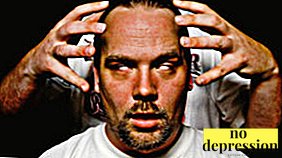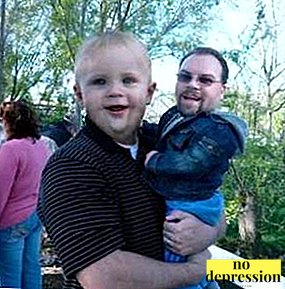Hypnosis - fiction or reality? For many years many people have been asking this question.
Not everyone believes that hypnosis really helps to get rid of many problems and even cure a number of diseases.
People tend to think that this is fiction, which is usually used charlatans. But it is not.
Hypnosis is not magic and not tricks, he used only by doctorswho have a special education, which means that hypnosis is applicable for medical purposes.
Concept

What is it in psychology? Hypnosis (from the ancient Greek language translated as "dream") - is the state of a person in which his mind changes.
At this moment he has a very high attention, but at the same time it is difficult for him to analyze the situation and he is subject to suggestion.
In a normal state, when a person is awake, different thoughts visit his brain, and while under hypnosis, he is very focused on just one thoughtsituations or sensations.
In such a position, he is very much suggestible, he can be inspired with almost anything. Therefore, a really good hypnotist will be able to thoroughly delve into the subconscious, which will undoubtedly lead to some consequences.
Does it really, is it real?
A lot of people still consider hypnosis some kind of fiction and quackery.
But this concept has long been a scientific confirmation: with the help of hypnosis, you can influence not only the subconscious of a person, but also control it.
But many scientists believe that it is possible to force a person to do something in this state only when he already has it.
For example, one cannot easily be ordered to kill if it is contrary to his moral conceptm, the hypnotist will have to try to make him do it.

Today, hypnosis is used to treat a huge number of diseases and disorders, especially neurological and mental ones.
is he really acts and helps very many.
Most people claim that they cannot be hypnotized. But it is not. Just most of humanity is influenced by the suggestion.
And the higher the intellectual abilities, the easier it is to hypnotize. But if it will be very strong internal resistancethen make it much more difficult.
What is hypnotherapy?
What is treated with hypnosis in psychotherapy?
Hypnotherapy is the use of hypnosis techniques to treat a number of diseases. It can be used by all doctors who have a license, and only they can officially use it.
There are also specialists who completed the course and learned all the necessary technicians, they received certificates, but they have no special education. They are forbidden to treat people for diseases., but they usually help fight alcoholism, smoking, gambling, being overweight, etc.
Hypnosis is treated:
- depressive states;
- sleep disturbance (insomnia and nightmares);
- eating disorders (anorexia, bulimia, etc.);
- neurosis (anxiety, phobias, obsessions, etc.);
- mental disorders (schizophrenia, OCD, manic-depressive psychosis, etc.);
- sexual disorders;
- unreasonable pains, phantom pains.

Also he helps seriously ill people, those who have this or that addiction, it is also used for relaxation, the achievement of various goals, changing habits.
How does it affect a person?
Turning into A state of trance, The human brain is able to slow down its work due to certain rhythmic, monotonous and repetitive stimuli that affect the senses (calm music, quiet speech, certain phrases, tangencies, etc.).
Plus, a temporary blocking is added to all, for example, closing the eyes, relaxing the body.
All this is aimed at reducing the flow of information that comes from the outside world. All the attention of the patient is directed only to the words and actions of the hypnotist.
But there are times when, in order to put in a state of sleep, just a glance of the doctor will be enough. But this is possible only under several conditions:
- the man who is trying to enter into a trance very easily suggestiblethe less attention span, the easier it is to enter into this state;
- hypnotist enjoys credibility with his patient, he unconditionally trusts him, so easily gives in.
Hypnosis possibilities

The possibilities of hypnosis are endless and truly amazing, they continue to be studied to this day.
It can help solve a lot of human problems, especially when they want them to decide, therefore fully open, trusted and treatable.
He can help only when he is applied by a truly professional, and between the patient and the hypnotist trust is established.
Hypnosis possibilities when properly applied:
- Helps to solve personal problems.
- Can “return to the past” and remember the forgotten moments.
- It will help ease and even get rid of some diseases.
- Get rid of addictions and phobias.
- Lie detector - under hypnosis it is impossible to lie, so it will help uncover the truth.
- Understand yourself and your problems.
- It can make doing strange things, something that a person would never do.
This is often used by intruders and specially trained technicians.
- It even treats diseases such as ulcers, psoriasis, hypertension, etc.
Kinds
What happens:
- Classical - The most standard way, used for medical purposes. A person is given clear attitudes to put him in a trance.
- Regressive - helps to survive the events of the alien, at which they are experienced with such force as if it is happening now. Very emotional look, makes you experience a huge range of feelings and emotions.
- Light - most often used to treat insomnia. Helps instantly fall asleep.
- Deep - Only 20% of people can be immersed in this type of hypnosis. In that case, the consciousness “goes far to the side”, and the subconscious mind comes to the fore, the specialist works with him, it is completely in his power. Use orders and installations.
After leaving the trance, memory loss is almost always observed, the person does not remember what happened during the session.
- Directive - the same as the classic. Helps to solve more serious problems that are deep in the subconscious.
- Nondirective - it is also called Eriksonovsky, uses an individual approach to each problem, uses indirect influence. The hypnotist tries to adapt to the client.
- Mental - can be used at significant distances, it is not necessary to have direct contact, but visual must be present.
- Instantaneous - has a very powerful suggestion, just one phrase or action is enough for a person to fall into a trance. He loses control of himself and his feelings.

The basics

The first basis is the ability to establish a trusting relationship with the patient.
Nothing happens without it.. Therefore, often before a session, the hypnotist talks with his patient, tells him about the nuances of the procedure and is interested in his opinion.
The doctor performing the procedure must be very attentive and competent. He should have a pleasant monotonous voice, he should be able to own it.
The look is also important. There is a special technique by which a hypnotist can plunge into a trance with just a glance.
The ability to tune in to one wave with the patient, to feel his condition, to know what emotions he is experiencing at one time or another, to empathize with him.
The specialist should be able to “grope” for those short points that bother his patient. He must find his problem and help him solve it.
Also it is very important to be able to properly bring a person out of this state. And you need to know when to do it. So that it is not too early or vice versa, too late. The latter option can negatively say on the mental state of the patient.
Methods
All hypnosis techniques are based on the use of certain physical or objective methods. At the same time, the effectiveness of these methods is achieved due to subjective factors.
What mean objective methods?
- decrease in motor activity, muscle relaxation;
- partial limitation of sensory systems;
- focused attention;
- periodic and monotonous repetition of certain words and actions.

Subjective factors implemented in the relationship between the patient and the person conducting the session.
Without one side there will be no other. If you do not make contact, the session may not be effective.
The patient must fully trust his hypnotist and clearly fulfill all his conditions.
That, in turn, should ideally own an objective method and correctly enter into a trance in order to get the necessary information to help solve the problem.
Suggestion technique
In hypnosis, there are many techniques with which the patient is immersed in a trance.
- Use of items: the patient needs to focus on a specific object, it can be anything, the main thing is that the object is at a distance of 25 cm from his eyes. After the patient is focused, the doctor begins a suggestion in a monotonous voice. You can use the account instead of words to plunge into sleep.
- If the patient is difficult to concentrate on the subject, then used suggestion with concentration of sight. It is important to have eye contact during which you can not blink.
- Use of the poem. An individual verse is selected for each individual patient, which the doctor reads out. After he finishes, the patient should fall asleep.
Also used for the treatment of:
 hypnosuggesting therapy - a condition in which a person is concentrated only on one subject / phenomenon and does not notice anything else, everything else for him as if does not exist at this moment;
hypnosuggesting therapy - a condition in which a person is concentrated only on one subject / phenomenon and does not notice anything else, everything else for him as if does not exist at this moment;- hypnotic regression - a condition in which an individual experiences events from his past, it happens that a person immersed in a trance begins to behave, for example, as a small child (if his problem is connected with childhood), etc.
Consequences of human exposure
As a rule, hypnosis often helps to get rid of problems and take a fresh look at the world. After him, people feel much better, they solve the problems that for many years prevented them from living. After a session or sessions it becomes easier, the person feels better.
But there is another side. If you conduct sessions too often, the patient may lose his own willpower. He loses the ability to make decisions and can no longer solve problems on his own.
In the future, if he has difficulties, he will not try to solve them, and immediately go for help to the hypnotist. Then a new problem arises - hypnomania - the desire and need to attend sessions as often as possible and be in a state of trance.

After leaving it, there may be causeless fatigue, anxiety and fear.
It can even go to fainting and convulsions.
But most often this happens if the specialist was not sufficiently qualified.
Also, hypnosis can cause hysteria, mental disorder and nervous breakdown. There have been cases when a person couldn't get out of tranceand when he came out, he changed dramatically.
Hypnosis is not recommended for people who already have mental disorders. Although it is very controversial, trance is used to treat patients with this type of disease. Need to do this really competent professional.
Hypnosis has long ceased to be a fairy tale. Many people all over the world resort to using this technique to get rid of some of their problems.
Today, hypnosis can help solve many problems and find Answers to questions that have so long been concerned. There are a huge number of techniques that are selected individually for the patient.
Truth and myths about hypnosis:

 hypnosuggesting therapy - a condition in which a person is concentrated only on one subject / phenomenon and does not notice anything else, everything else for him as if does not exist at this moment;
hypnosuggesting therapy - a condition in which a person is concentrated only on one subject / phenomenon and does not notice anything else, everything else for him as if does not exist at this moment;

